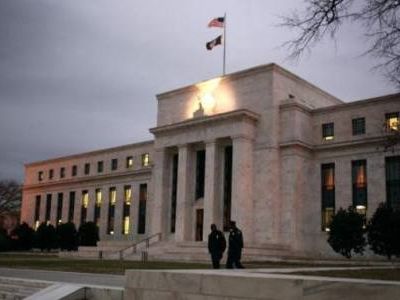The Dallas Fed noted that the current moderate employment growth serves as a signal of market equilibrium, casting doubt on the rationale for the Fed’s interest rate cuts. The rise in 10-year U.S. Treasury yields and the breakout surge in gold prices following last month’s rate cut already contained warning signals.
A new report from the Dallas Fed suggests that the Federal Reserve, along with most mainstream economists, may have a serious misjudgment about the labor market.
The study warns that the Fed and other experts may have failed to accurately interpret the true state of the labor market. If the report’s conclusions hold, this implies that the Fed may be making a serious mistake by cutting interest rates too quickly and prematurely while inflation remains high.
 This might explain why the yield on 10-year U.S. Treasury bonds is now higher than it was last month before the Fed cut short-term rates; it also explains why gold prices have risen by $300 per ounce since the Fed’s rate cut, surpassing $4,000 per ounce for the first time—these trends carry warning signals.
This might explain why the yield on 10-year U.S. Treasury bonds is now higher than it was last month before the Fed cut short-term rates; it also explains why gold prices have risen by $300 per ounce since the Fed’s rate cut, surpassing $4,000 per ounce for the first time—these trends carry warning signals.
If investors’ concerns about inflation intensify, such market reactions are to be expected.
Last month, the Fed lowered the short-term interest rate by 25 basis points to a range of 4%-4.25%; the market expects two more rate cuts this year. Several senior Fed officials, including John Williams, Mary Daly, and Chris Waller, have expressed support for further rate cuts. President Trump has called for significant rate cuts, and Stephen Miran, his newly appointed Fed official, shares the same view.
Their rationale is as follows: the slowdown in the U.S. labor market is concerning, and thus, even though inflation remains far above the Fed’s target and shows no signs of cooling, short-term interest rates need to be lowered to stimulate the economy.
However, the Dallas Fed’s latest analysis indicates that this conventional understanding of the labor market is flawed—it fails to account for the impact of the Trump administration’s stringent crackdown on illegal immigration. This includes the effect of at least 300,000 immigrants “voluntarily leaving” the labor market since this administration took office, as well as all those who were forcibly deported. The analysis also reflects a significant reversal compared to the large influx of immigrants into the United States a few years ago.
Dallas Fed economist Anton Cheremukhin stated that the core conclusion is as follows: the number of new jobs the U.S. economy needs to create each month has significantly decreased—only enough to absorb new entrants into the labor market to maintain a low unemployment rate.
He wrote in the report, “The sharp reversal of migration flows, combined with cyclical changes in labor force participation, has caused the number of jobs required to maintain the monthly employment balance (i.e., the number of new jobs needed to keep the unemployment rate stable) to plummet from a peak of about 250,000 in 2023 to approximately 30,000 by mid-2025.”
He added, “This means that in 2023, a moderate increase in nonfarm payroll growth may have sparked concerns, but now this data precisely reflects a stable and balanced labor market.”
Cheremukhin stated that the unemployment rate is currently a better indicator of the health of the labor market than monthly nonfarm payroll data.
The Dallas Fed’s research is based on independent analysis of real-time economic data, including government-released border entry data, among others.
If their conclusions hold true, the Federal Reserve’s interest rate cut last month could prove to be a mistake, and subsequent cuts may follow suit, potentially accelerating inflation.
Federal Reserve Chair Powell acknowledged that the current administration’s efforts to remove undocumented immigrants might be a key factor behind the decline in nonfarm payroll data — one of the reasons he resisted pressure from the White House and refrained from cutting rates prematurely.
Notably, inflation remains stubbornly above the Federal Reserve’s 2% target. Under normal circumstances, facing such price pressures, the Fed would not even consider lowering short-term interest rates. The only reasons for last month’s rate cut were: first, a significant slowdown in monthly nonfarm payroll data (with prior months’ figures also revised downward substantially); and second, immense pressure from the White House — Trump has attempted to fire a Federal Reserve governor (while publicly humiliating him) and openly threatened to dismiss Powell if he refuses to cut rates.
In August this year, Trump fired the Commissioner of the Bureau of Labor Statistics following the downward revision of recent employment data (a process accompanied by public humiliation). However, research from the Dallas Fed suggests that these downward revisions in employment data may also be an unintended consequence of his administration’s policies.
